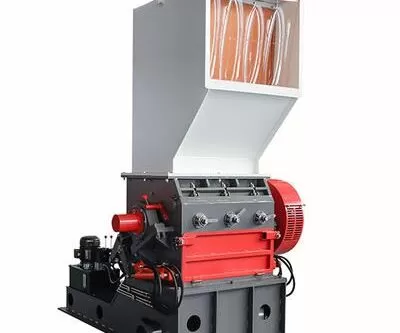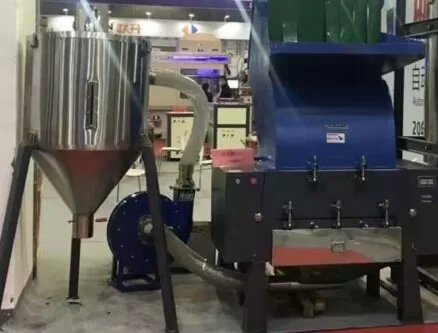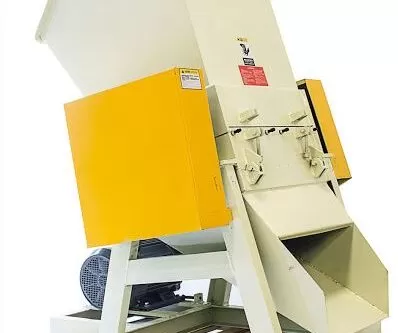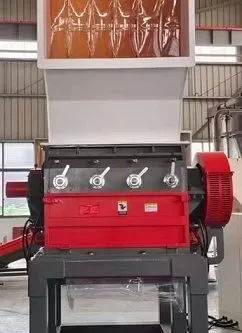Let me guess—you’re staring at heaps of discarded plastic, thinking, “There must be a better way.” I’ve seen this problem firsthand. Waste is piling up. Landfills are gasping. And traditional disposal methods? They’re outdated and environmentally damaging. But here’s the kicker: those plastic scraps are actually valuable materials in disguise. The challenge? Turning waste into gold—aka usable plastic flakes—using proper crushing tech. That’s where I come in.
Plastic crushing technology transforms discarded plastic into reusable raw material, giving it a second life. From beverage bottles to industrial containers, real-world cases prove that efficient crushing systems reduce landfill waste, save cost, and fuel circular economies. Want to turn waste into value? Crushing is step one.
Crushing sounds brutal, but in our industry, it’s the first step toward sustainability. Let me show you how we do it—with some real grit and grind.

Why is plastic crushing the cornerstone of waste resource utilization?
We can’t recycle what we can’t process.
Plastic crushing is the foundation of waste-to-resource conversion. Think of it as breaking down the fortress so we can reuse the bricks. A solid crushing system reduces volume, standardizes material size, and prepares plastic for washing, extrusion, or even chemical recycling.
Without crushing, downstream equipment like washers or pelletizers choke on oversized pieces. Plus, uncrushed plastic takes up more space, meaning higher storage and transport costs.
What types of plastic waste can be crushed effectively?
You name it—we’ve crushed it.
Our plastic crushing machines at Amige handle everything from HDPE drums and PP woven bags to PET bottles and ABS computer housings. The key is choosing the right blade material and rotor structure.
For example, soft films need high-speed cutters with tight clearances. Meanwhile, thick pipes demand slow-speed, high-torque shredders with reinforced rotors.
In one project in Thailand, we helped a factory crush 15 tons of PP crates daily. After installation, their processing speed jumped by 60%, and blade wear dropped by half. Coincidence? Nope. Just smart engineering.

How does crushing integrate into the recycling process?
It’s not a standalone hero—it’s part of a team.
A typical recycling line looks like this: sorting → crushing → washing → drying → extrusion. Crushing is the second stage, but arguably the most crucial. Why? Because it determines the efficiency of every step that follows.
Take our recent setup in Kenya. The client was collecting post-consumer PET bottles. With our customized crusher, we reduced bottle size by 90%. This made the washing line faster and reduced energy usage in the extrusion stage. You’d think we performed magic—but it was just precision engineering.
What are some real-life crushing project examples?
Let’s roll out some behind-the-scenes drama.
Case 1: Vietnam – The Fishnet Grinder
We helped a coastal recycler deal with nylon fishnets, which are notoriously tough. With a dual-shaft shredder and water-assisted cutting system, we turned those nets into flakes ready for fiber production.
Case 2: Egypt – HDPE Barrel Blitz
An industrial waste company needed to crush thousands of chemical barrels per week. Our solution? A hydraulic pusher system paired with SKD-11 blades. After setup, their downtime went from weekly to quarterly.
Case 3: Colombia – Post-Consumer PE Film
They were choking on plastic film until we introduced a wet crushing system. Output: clean flakes, less static, and a 30% reduction in pre-wash labor.

What tech improvements make modern crushers more efficient?
This isn’t your grandpa’s crusher.
Today’s plastic crushing machines feature sound insulation, dust control, automatic reverse, and energy-saving motors. Some even come with IoT dashboards—yep, plastic crushers with brains.
Blade design has also evolved. We now use staggered rotors, V-cut technology, and segmented knives. These allow for smoother feeding and lower maintenance.
For example, in our Amige “Beast-4000” (not its real name, but it should be), we’ve added auto-lubrication, temperature sensors, and a soft start system. All these improvements extend blade life and reduce operator headaches.
How do you choose the right crushing system?
Start with your plastic type. End with your output goal.
Here’s the quick cheat sheet:
- Rigid plastics (buckets, chairs): Use a heavy-duty granulator with large infeed.
- Soft films: Go for water-assisted crushers with high RPM.
- Pipes and profiles: You’ll need a shredder–crusher combo.
- Contaminated plastics: Add pre-wash or magnetic separators.
One of our clients in Nigeria was processing agricultural mulch film. It had sand, dirt, and even nails. We recommended a double-deck screen before crushing and reinforced blades. Problem solved.
And hey—if you don’t know where to start, ask me. That’s what CEOs are for, right?
What challenges come with plastic crushing?
Let’s not pretend everything is perfect.
Plastic crushing creates:
- Dust (solution: cyclone separators)
- Noise (solution: soundproof covers)
- Blade wear (solution: high-grade alloy steel and smart feeding)
- Inconsistent feed (solution: conveyor systems with metal detectors)
Maintenance is key. I tell every client—clean your crusher like you clean your car. Not just the outside, but under the hood. A clean rotor is a happy rotor.
And yes, we’ve had horror stories: one guy tried to crush full engine blocks. Spoiler: that’s not what these machines are for.

What’s the ROI on investing in a crushing system?
Let’s talk money, shall we?
A good crushing system pays itself off in 6 to 18 months—depending on your volume and product. For example, crushing scrap PE film into flakes increases resale value from $100/ton to $450/ton. That’s a 4x jump.
Plus, when you crush and wash in-house, you save on transport and third-party processing fees. That’s thousands of dollars a month back into your pocket.
And hey, it’s not just money. You get sustainability cred, too. That’s the kind of green that attracts investors.
Conclusion
Plastic crushing isn’t just an industrial step—it’s the heartbeat of circular recycling. Real-world cases show that with the right tech, partners, and process, we can turn trash into treasure. It’s loud, it’s gritty, but it works.
